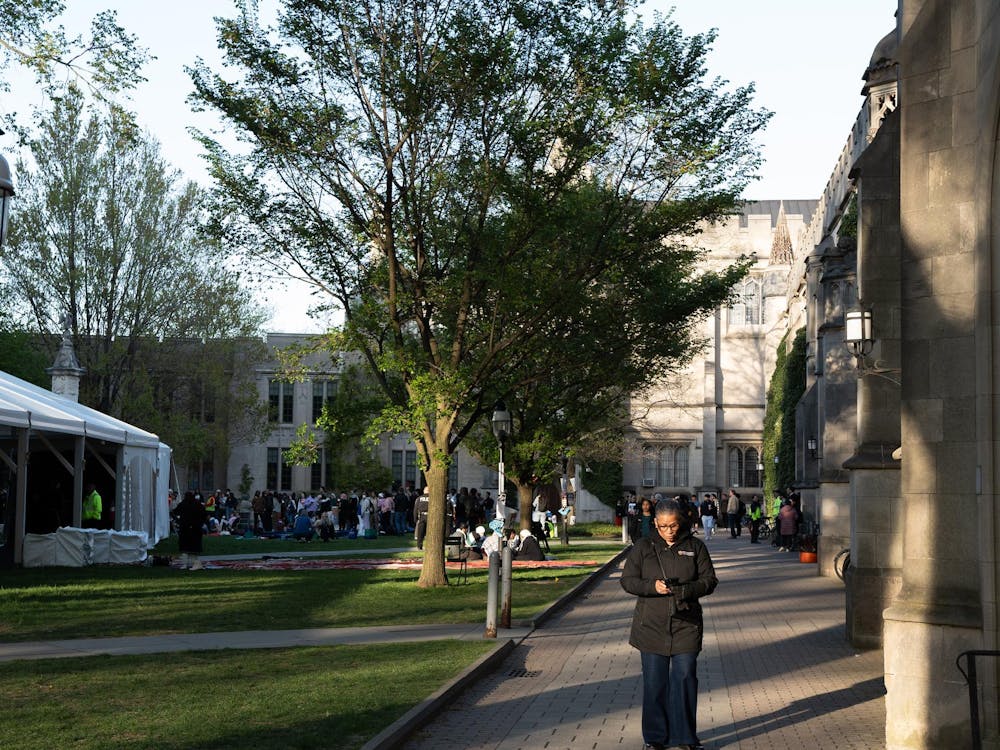The foods we eat are composed of a variety of molecules. From carbohydrates to proteins — to metal ions — we are what we eat. But how does this happen? How do we integrate the components of our food into the biological building blocks so integral to basic functions? This area of study is a robust one, and one lab at Princeton made a key step toward figuring it out.
Published in the journal Nature, “Biosynthesis of selenium-containing small molecules in diverse microorganisms” details the results of a study conducted by the Seyedsayamdost Lab in the University Department of Chemistry. Researchers discovered a new way by which microorganisms are able to break down selenium. Microorganisms are simpler than complex multicellular organisms, making them critical model systems for research with wide-ranging applications. This research has implications for the development of cancer therapeutics.
Selenium is a non-metal element previously thought to be incorporated primarily into nucleic acids, such as DNA and proteins. The work from Princeton scientists expands the known boundaries of selenium metabolism by showing that microbes have evolved pathways to incorporate selenium into a host of other molecules, including sugars. Sugars such as glucose are important for metabolism because they are a key energy source.
“Prior to our work, there was no known pathway for incorporation of selenium into small molecules,” said Mohammad Seyedsayamdost, professor in the Department of Chemistry and the study’s principal investigator. “Before this, selenium metabolism was limited to what is known as primary metabolism; selenium was only known to be incorporated into protein polymers and nucleic acid polymers,” he added.
A metabolic pathway involves a collection of enzymes — proteins that regulate the rate of chemical reactions — and the products of these reactions, referred to as metabolites. Enzymes, like all proteins, are coded for by genes in the genetic material of an organism.
Seyedsayamdost’s lab found that there is, in fact, a new pathway — a new collection of enzymes — that performs biochemical reactions with selenium, breaking old bonds and forming new ones with the element.
The researchers implemented a genome mining strategy in this work, which focuses on the discovery of new pathways and their corresponding elements using data accessible in genomic databases. Given that genes code for proteins such as enzymes, genomic database data can elucidate new genes — and therefore new enzymes — involved in metabolizing selenium. This strategy was used to examine genes in the vicinity of the selenophosphate synthetase (SelD) gene, known to produce selenium for incorporation into nucleic acids.
“Decades ago, when the original selenium functions were discovered, [the scientists] didn’t have a lot of genome sequences to work with,” said Chase Kayrouz, a graduate student in the Seyedsayamdost Lab and the study’s lead author. “Nowadays we do, but until now, nobody had really looked for new examples of selenium in metabolism. So the time was just perfect to use genome mining,” he added.
With this, the team found two new enzymes that play a role in making carbon-selenium bonds: selenoneine synthase (SenA) and selenosugar synthase (SenB). These enzymes, the first found to act on biological small molecules, are of critical interest given that they interconnect selenium metabolism in a new way.
The researchers were able to express each of these new genes in Escherichia coli (E. coli), a bacterial model system, resulting in the assembly of the entire pathway in a test tube.
Kayrouz shed light on the challenges behind accomplishing such a feat.
“The difficult part of this project was identifying what substrates to feed to the enzymes and also the determination of what the final product of the pathway actually was,” Kayrouz said, referring to a challenge faced in the study. “Using genome mining, we can predict that specific genes on the DNA sequence are going to be doing something with selenium, but we don’t know exactly what they are going to be doing and what bonds are going to be forming. So that was a challenge that we eventually overcame in the experiments.”

“We now have, for the first time, enzymes that work on small molecules and incorporate selenium. So there are biocatalytic applications, which means you could now use this enzyme to perhaps incorporate selenium into other natural products and into other molecules,” Seyedsayamdost said.
In terms of the potential applications of this work, Seyedsayamdost pointed out the therapeutic nature of selenium-containing small molecules and why it is of such great interest to the lab and to the scientific community.
“Selenoneine is potentially a miracle antioxidant. There hasn’t been much access to it because it has been isolated from whale liver and marine animals. But every time it has been used in an assay [for antioxidant properties], it has come up incredibly positive,” he said.
Antioxidants are critical to human health because of their ability to counteract oxidative stress imposed by reactive oxygen species. Reactive oxygen species have been implicated in many pathological contexts, including cancer. Antioxidants, therefore, ultimately hold immense therapeutic potential – among several other applications.
“So I think another key application is using the enzymes to make a large amount of selenoneine and have it be available to the community for various kinds of tests,” Seyedsayamdost added. “That’s something else that we are currently hoping for.”
Mahya Fazel-Zarandi is a staff news writer for the ‘Prince.’
Please send any corrections to corrections[at]dailyprincetonian.com.









